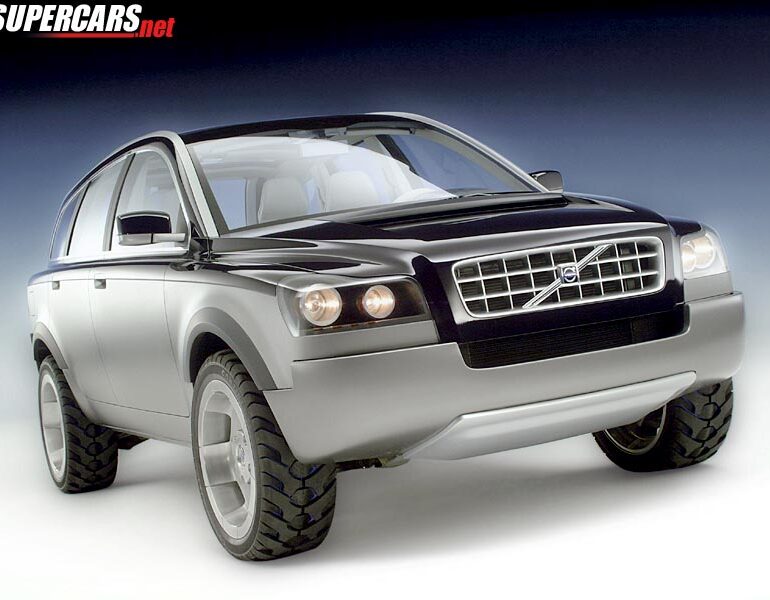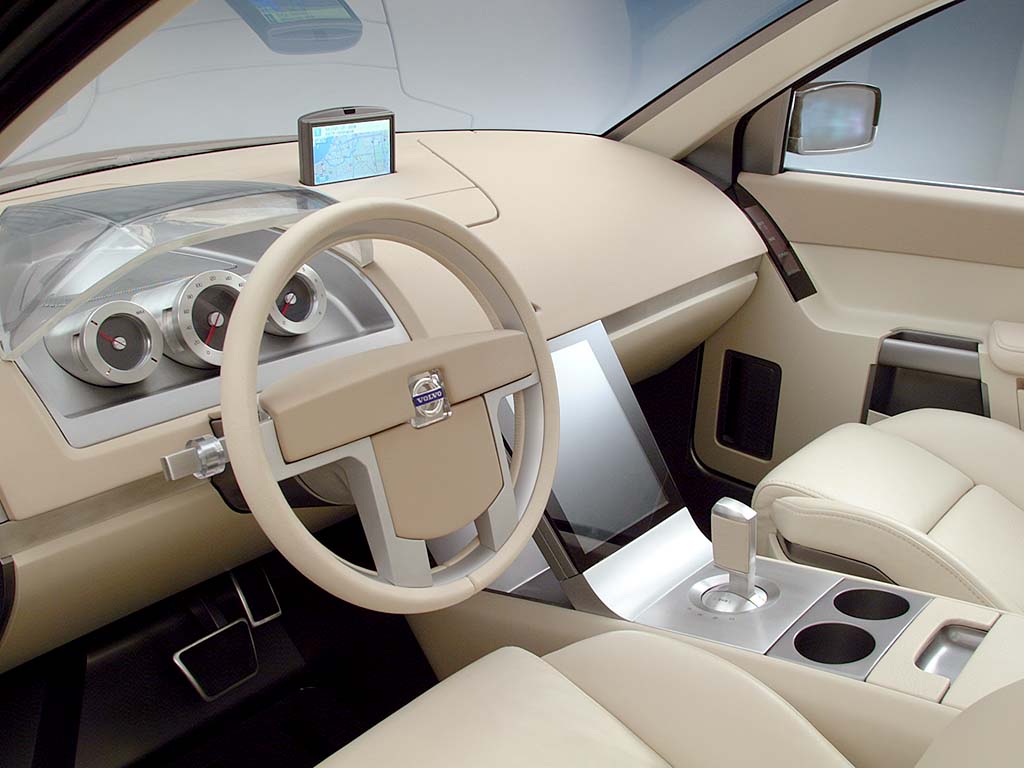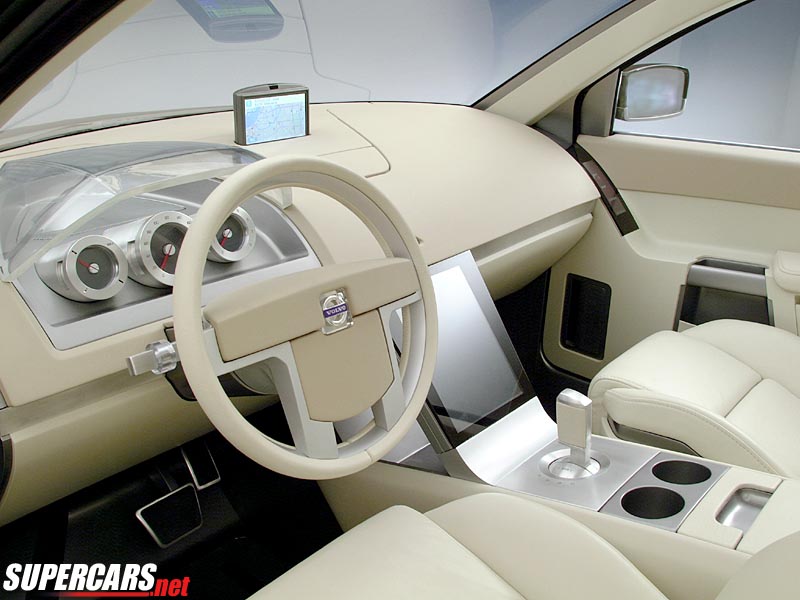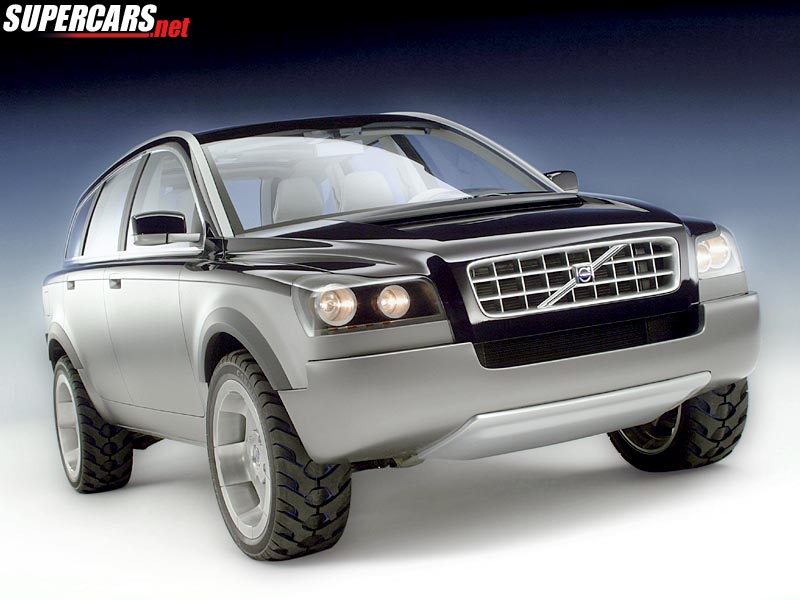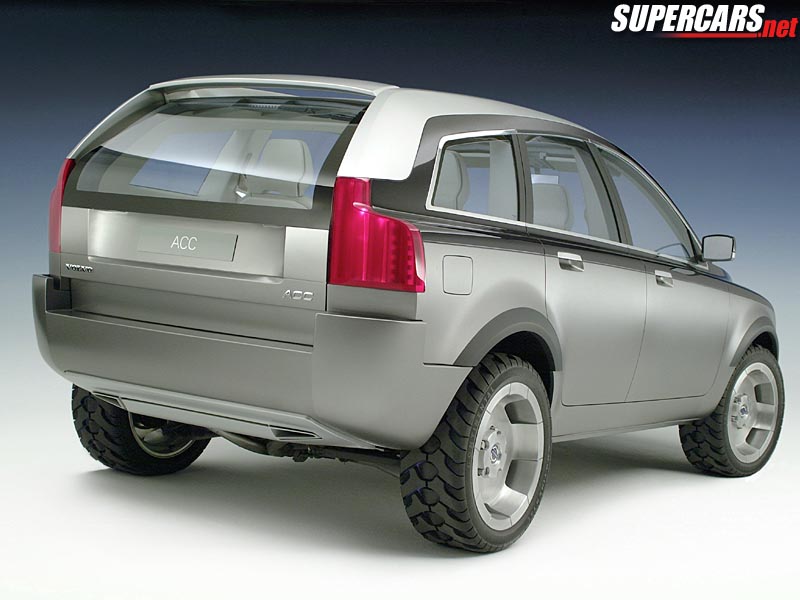2001 Volvo ACC Concept
The Volvo Car Corporation is now preparing itself for the leap into the demanding and expansive SUV segment. The Volvo Adventure Concept Car (ACC), which will be given its first showing at the international motor show in Detroit, is the first indication of what is waiting around the corner.
“We want to show that we mean business when we say that we have what it takes to compete with the very best in the SUV segment,” says Hans-Olov Olsson, president of Volvo Car Corporation. It should be stressed that the Volvo ACC is not the car customers will see in dealer showrooms when Volvo Cars’ first SUV (Sport Utility Vehicle) is launched, an event that will take place within the next two years. This concept car should instead be seen as a “thermometer”, a tool for assessing the expectations and demands the market has when it comes to an SUV from Volvo.
“We are naturally hoping to create a solid commercial base for our introduction. It is therefore important to hear the views and comments of our customers while we still have time to make precision adjustments to the product,” says Dieter Laxy, head of marketing, sales and service at Volvo Car Corporation.
The name “Adventure” emphasizes the ability to be an integrated part of the owner’s lifestyle. Volvo ACC is the right choice for all types of safe adventures, thanks to a fine-tuned combination of off-road capability, driving pleasure, roominess, safety and comfort. During the time the Detroit Motor Show is open to the public, visitors will be able to make their views of the ACC known directly to Volvo’s SUV team via special computer monitors. At a later stage, Internet users all over the world will have the same chance to pass on their comments to the product developers.
Tackling major challenges
The Volvo ACC is based on five basic assumptions about the properties the market expects in an SUV from Volvo Cars.
- Driving characteristics on a par with those in a well-balanced car, when it comes to both road feedback and driving safety.
- First-class protection for all the occupants in an accident – without being unnecessarily aggressive to the other car in a collision. Tackling this classical SUV challenge is a matter of top priority at Volvo Cars.
- Powerful, responsive engines combined with competitive fuel consumption and operational economy.
- Emissions on the same level as those of a normal car. The target is that this larger, heavier model will also comply with the US requirements for ULEV and ULEV II.
- Generous interior space without taking up too much room on the road. In a number of customer surveys, SUV customers mention “exactly the right size”. Volvo Cars is aiming to find the format that attracts customers.
Four top-class seats
It goes without saying that all these properties are reflected in the ACC’s design language. Like the Volvo S60, the Volvo ACC has what is known as a “cab forward” appearance; in other words, the driver’s area is at the very front. The front lines slope forward gently to create a muscular impression without making the car look aggressive.
“We are interested to see the kind of reception people give to a large Volvo. The target has been to find a design that is not as ‘macho” as that of many other SUV models in the segment. We prefer to talk about a masculine appearance, a design that creates a sense of security. This is important in view of the fact that many SUV buyers are women who like the feeling of safety and control,” says Peter Horbury, chief designer at Volvo Car Corporation.
Yet again, the design team draws parallels with a jet aircraft. In the Volvo ACC, the driver sits high up and well to the front, with good visibility outside the car and perfect control of the low-level instruments.
The Volvo ACC has four seats and an exceptional equipment level. Among other things, passengers have access to a refrigerator, TV and a world-class audio unit.
“Like flying comfortably and low in first class. You can travel from coast to coast in the USA, with your business colleagues or your family, without being deprived of any comfort or convenience,” concludes Peter Horbury.


